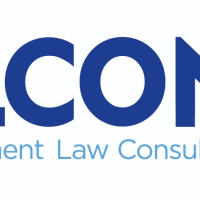29.10.2020
Web structure: what it means and why it is so important
The web structure of the different pages that make up a site is directly related to both the architecture of the information and the correct distribution of the contents. Its main function is to facilitate its usability and improve its positioning.
Therefore, if you are in the process of creating a website from scratch or you are renovating it, you have to take into account the web architecture. In this article I will give you some keys to define a content structure so that your site is not an amalgam of pages and blog entries in disorder. Keep reading!
What is the web structure? Definition
In this way, web structuring could be defined as the way in which the pages that make up a website are organized and distributed, as well as how they relate to each other.
A bad web architecture will affect the navigability, since the user will have the feeling of being lost, it will be difficult to find quickly what he is looking for and, finally, he will leave the site. And this is something that search engines such as Google don't like either, penalizing this important aspect of SEO.
Why is the structure of web content important for SEO positioning?
For a website to scale results in the SERP (Search Engine Results Pages), all aspects of SEO must be worked well. And one of the most important ones is to structure a website correctly for two main reasons. I detail them below!
This will increase the probabilities of getting a conversion or a lead (subscribe to a newsletter, fill out a contact form, ask for a quote, etc.), as well as increase the options of loyalty, that is, to visit the site another time.
How to configure the architecture of a website?
To configure the content structure of a website, several aspects must be taken into account:
Defining and delimiting the entity of the site.
Extracting its categories.
Controlling its terminology.
Establishing the relationship between terms and categories.
There are two crucial ways of classifying information: hierarchical and labeling.
5 tips for good web structuring
As the Greek philosopher Heraclitus of Ephesus said, "everything flows, nothing remains". That's why the web structure should be dynamic. Because, like everything in life, business evolves and changes over time. If this is not taken into account, the site may be a jumble of pages without coherence.
For example, if it is a product, the ideal thing to do is to redirect the URL to another similar product, to its category or, as a last resort, to the homepage.
When thinking about a website architecture, it is important to consider that one page or article is the main content and others link from there providing more information without competing with the main one.
For example, a page of pillar content on SEO should be complemented with other more specific ones (SEO On Page, SEO Off Page, Link Building...).
In short, the importance of a good web architecture is beyond any doubt: users will feel more comfortable when navigating and finding quickly and easily what they need. Besides, search engines will have a clearer idea of the website's subject matter and what the most relevant content is, which will help to improve SEO positioning.
What about you, do you have a good web structure as we wowessays.com in your site or do you need a little push in this sense? Tell me your case in the comments section!
Therefore, if you are in the process of creating a website from scratch or you are renovating it, you have to take into account the web architecture. In this article I will give you some keys to define a content structure so that your site is not an amalgam of pages and blog entries in disorder. Keep reading!
What is the web structure? Definition
In this way, web structuring could be defined as the way in which the pages that make up a website are organized and distributed, as well as how they relate to each other.
A bad web architecture will affect the navigability, since the user will have the feeling of being lost, it will be difficult to find quickly what he is looking for and, finally, he will leave the site. And this is something that search engines such as Google don't like either, penalizing this important aspect of SEO.
Why is the structure of web content important for SEO positioning?
For a website to scale results in the SERP (Search Engine Results Pages), all aspects of SEO must be worked well. And one of the most important ones is to structure a website correctly for two main reasons. I detail them below!
- To help Google understand what a website is about
- Ensuring that your own content does not compete with each other
- Importance of web content structure for user experience (UX)
This will increase the probabilities of getting a conversion or a lead (subscribe to a newsletter, fill out a contact form, ask for a quote, etc.), as well as increase the options of loyalty, that is, to visit the site another time.
How to configure the architecture of a website?
To configure the content structure of a website, several aspects must be taken into account:
- 1. Pyramidal content structure
- 2. Division of content into categories
- 3. Balancing the size of the categories
- 4. Internal link structure
- 5. Taxonomy: order first and foremost
Defining and delimiting the entity of the site.
Extracting its categories.
Controlling its terminology.
Establishing the relationship between terms and categories.
There are two crucial ways of classifying information: hierarchical and labeling.
- 5.1Hierarchy of content in categories and subcategories
- 5.2 Label the content
- 6. Key content
5 tips for good web structuring
As the Greek philosopher Heraclitus of Ephesus said, "everything flows, nothing remains". That's why the web structure should be dynamic. Because, like everything in life, business evolves and changes over time. If this is not taken into account, the site may be a jumble of pages without coherence.
- 1. Remove and redirect
For example, if it is a product, the ideal thing to do is to redirect the URL to another similar product, to its category or, as a last resort, to the homepage.
- 2. Evaluate the menu
- 3. Rethink your taxonomy
- 4. Communicate changes to Google
- 5. Eject the duplicate content
When thinking about a website architecture, it is important to consider that one page or article is the main content and others link from there providing more information without competing with the main one.
For example, a page of pillar content on SEO should be complemented with other more specific ones (SEO On Page, SEO Off Page, Link Building...).
In short, the importance of a good web architecture is beyond any doubt: users will feel more comfortable when navigating and finding quickly and easily what they need. Besides, search engines will have a clearer idea of the website's subject matter and what the most relevant content is, which will help to improve SEO positioning.
What about you, do you have a good web structure as we wowessays.com in your site or do you need a little push in this sense? Tell me your case in the comments section!
We have gathered experts who have experience in a variety of niches ranging from microbiology to the study of Shakespeare literature. By referring to the database of Wowessay you can always find…
Property
Why Do We Need Emergency Lighting?
Emergency lighting plays a critical role in ensuring life safety first in any…
Employment & HR
Labour’s new Employment Rights Bill: challenges employers...
The introduction of Labour’s Employment Rights Bill on 10th October 2024 has created a significant shift in how…
More Articles
Business Management
The Value of a Sustainability Strategy in the Tender Process
In today’s competitive landscape, businesses face increasing pressure to demonstrate their commitment to…
Business Management
Unlocking the Power of Raw Financial Data
At Master of Coin Consulting, we offer independent strategic finance advice to help micro to medium-sized businesses…
Would you like to promote an article ?
Post articles and opinions on Professionals UK
to attract new clients and referrals. Feature in newsletters.
Join for free today and upload your articles for new contacts to read and enquire further.







